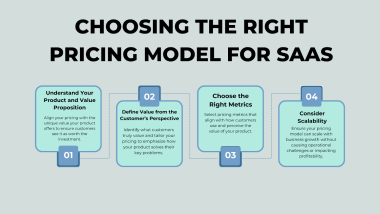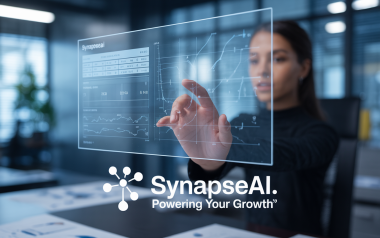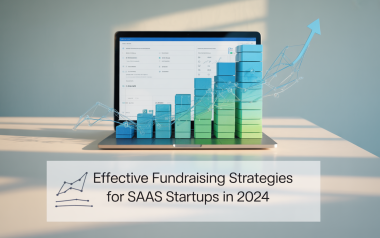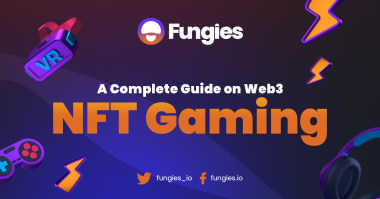The rise of AI technologies has created unprecedented opportunities for solo developers and indie hackers to build competitive SaaS products with minimal resources. Today’s AI tools, APIs, and low-code platforms enable individual founders to create sophisticated applications that previously required entire development teams, opening doors to profitable online businesses with sustainable recurring revenue models.
Key Takeaways:
- Niche-focused AI SaaS products present viable business opportunities for solo developers without requiring large teams or investments
- Building a minimum viable product (MVP) using low-code platforms and AI APIs can significantly accelerate time-to-market
- Selecting the right AI technologies for your specific use case is crucial for development efficiency and product differentiation
- Bootstrapping strategies focused on early revenue generation help solo founders maintain control while growing sustainably
- Alternative funding approaches like pre-seed rounds, crowdfunding, and grants can provide capital while preserving founder autonomy
AI-Powered SaaS Opportunities for Solo Founders
The current AI landscape offers remarkable entry points for solo developers to create valuable SaaS products. These technologies level the playing field, allowing individual builders to compete effectively against larger companies by leveraging readily available AI capabilities.
Several niches show particular promise for solo founders. I’ve identified specific sectors where a single developer can make significant impact with the right AI implementation:
- Industry-specific AI writing assistants (legal documents, real estate descriptions)
- Automated video editing and content repurposing tools
- No-code AI chatbot builders for small businesses
- AI-powered resume generation and optimization platforms
- Vertical-focused content generation tools
These ideas leverage existing AI capabilities while addressing specific pain points for targeted customer segments. The focused approach helps solo founders avoid competing directly with large, general-purpose AI platforms that have substantial resources.
Developing Your AI SaaS MVP Efficiently
Creating a successful MVP as a solo founder requires a strategic approach to product development. The goal is validating your idea with minimal resources while still delivering enough value to attract early users and feedback.
Start with these foundational steps to validate your concept:
- Create detailed wireframes to visualize user experience and interface
- Set up a landing page to collect email addresses from interested prospects
- Develop user personas to guide product development decisions
- Build a waitlist to generate initial buzz and create a sense of exclusivity
For the actual MVP development, low-code platforms can dramatically reduce development time. Tools like Bubble or Adalo enable solo founders to create functional prototypes without extensive coding knowledge, allowing you to test core concepts before committing to full-scale development.
Once you have a basic prototype, early user testing becomes critical. Gather feedback from potential customers to refine your product before a wider launch, focusing on must-have features rather than nice-to-haves.
Selecting the Right AI Tools and Technologies
Choosing appropriate AI technologies is a make-or-break decision for solo SaaS founders. The right tools accelerate development while the wrong choices can lead to technical debt and scalability problems.
When evaluating AI APIs and services, consider these factors:
- Integration complexity and documentation quality
- Cost structure (especially how costs scale with usage)
- Performance and reliability metrics
- Customization capabilities
- Data privacy and compliance features
Large Language Models (LLMs) like GPT-4 offer particularly valuable capabilities for many AI SaaS applications. Their flexibility allows implementation across diverse use cases from content generation to data analysis, with relatively straightforward API integration.
Beyond pure AI tools, look for complementary technologies that enhance your development workflow. Cloud platforms with AI-specific services, serverless architectures, and no-code database solutions can help solo developers maintain velocity while minimizing operational overhead.
Bootstrapping Strategies for Solo AI Founders
Bootstrapping an AI SaaS business requires careful resource allocation and deliberate focus on sustainable growth. The key is building revenue-generating capabilities quickly while keeping costs minimal.
Implement these practical bootstrapping approaches:
- Design your architecture for incremental scaling to avoid upfront infrastructure costs
- Leverage free tiers of development tools and platforms during early stages
- Consider a service-first approach, delivering manual work initially while automating gradually
- Focus on annual billing to improve cash flow predictability
- Target customers with manageable acquisition costs (often B2B over B2C)
The main advantage of bootstrapping is retaining complete control over your business direction. This autonomy allows solo founders to make quick decisions without investor consultation, working at their preferred pace and prioritizing long-term sustainability over rapid growth when appropriate.
Funding Options for Solo AI SaaS Developers
While bootstrapping offers advantages, some AI SaaS products require initial capital for development. Several funding approaches are particularly suitable for solo founders:
Pre-seed funding rounds can provide early capital with relatively founder-friendly terms. Target angels and micro-VCs who specifically understand AI startups and appreciate the efficiency of solo founders leveraging modern development tools.
Crowdfunding platforms offer dual benefits: raising funds while validating market interest. This approach works especially well for AI SaaS products with clear, easily explained value propositions that solve recognizable problems.
Grant programs focused on AI innovation represent another valuable funding avenue. Many governments and organizations offer non-dilutive funding specifically for AI development, particularly for applications addressing social good, sustainability, or economic development.
Revenue-based financing has also emerged as an attractive option for SaaS founders. These arrangements provide capital in exchange for a percentage of future revenues rather than equity, allowing solo founders to maintain ownership while accessing growth funds.
Building for Long-Term Success
Sustainable growth as a solo AI SaaS founder requires thinking beyond initial development. The most successful indie hackers build defensible advantages through specialized domain knowledge, unique datasets, or superior user experiences.
Plan for your product’s evolution by implementing feedback loops from early users. Their input will help identify the most valuable features to prioritize, especially important when working with limited resources.
Consider implementing a community-driven approach to both product development and marketing. Active user communities can provide valuable feedback, generate word-of-mouth growth, and even contribute to product development through feature requests or testing.
Remember that AI technologies evolve rapidly, requiring ongoing learning and adaptation. Set aside dedicated time for keeping your skills current and evaluating new AI capabilities that could enhance your product offering.
Solo founders who succeed in AI SaaS typically excel at finding the right balance between technical development and business operations. While the AI components are critical, equal attention to marketing, customer support, and pricing strategy ultimately determines long-term viability.
Sources
Alexander F Young – 7 AI SaaS Ideas You Can Build as a Solo Founder






